Learning about setting in a story
Learn how to get your ideas from your head and into your poem.
Anyone can write poetry. You can write poetry about whatever you feel like, in whatever way you want, for whatever reason you choose.
In this article you will find out:
- How to write a poem
- How to use similes, metaphors and personification
- Different styles of poetry, like haikus and free verse
This resource is suitable for creative writing for P2, P3, P4, P5, P6 and P7 (First and Second Level Curriculum for Excellence).
Video - Story structure
Watch this video to help you with writing poetry.
Learn how to get your ideas from your head and into your poem.
How to write poetry.
Poetry is a form of writing designed to evoke emotions as you read aloud or to yourself. That sounds very complicated.
Where do you start with that? How about subject?
All poems need to be about something. Take Robert Burns. He wrote about all sorts. To A Mouse is about, well, a mouse. Address To A Haggis is about, you guessed it, a haggis.
So you can write poetry about anything you like. What's important in poetry is the language you use to describe your subject.
To create vivid descriptions of what you're writing about, you can use similes, comparing things using like and as.
Jackie Kay uses similes in her poem, Bushfire.
'That fire they said was red, as red, as red, as red as a fox, your lips, a cherry.'
William Wordsworth also used similes skilfully to create imagery in the head of the reader.
'I wandered lonely as a cloud that floats on high o'er vales and hills.'
Mr Wordsworth also used metaphors, comparing two things which aren't alike, but have something in common.
'When all at once I saw a crowd, a host of golden daffodils.'
He also used personification, which is describing an object as if it were alive.
'Beside the lake, beneath the trees, fluttering and dancing in the breeze.'
You've got a subject. You've got some great images. Now, you need to fit this into your poem and there are lots of different structures to use with their own rhyme, rhythm shape and length.
If you want something short, you could try a traditional Japanese haiku. Just three lines long, five syllables, then seven, then five, like this:
'An old silent pondA frog jumps into the pondSplash. Silence again.'
It may seem like poems have lots of rule, but they don't have to.
Free verse is poetry that does not rhyme or have a regular rhythm.
'Bacon sizzling on Sunday mornings.Hot buttered toast.Crunch, crunch, crunch.'
It lets you do anything you want with the words, the length, the structure, even the punctuation.
The important thing to remember is that anyone can write poetry.
You can write poetry about whatever you feel like, in whatever way you want, for whatever reason you choose.
Why not try a limerick? Five lines long. Something like this.
'There was a young boy from Peruwith something in important to doso he found a quiet placeto get some head spaceand wrote poetry while on theβÄΠ'
Nah, okay, maybe not then.
Where to start
Poetry is a form of writing designed to make you feel different emotions, as you read it out loud or to yourself. Where do you start?
Choose a subject
- Start with the subject. All poems need to be about something.
- You can write poetry about anything you like. For example, you could write a poem about your friends, your favourite food or an animal.
- The famous Scottish poet, Robert Burns wrote about a mouse, a daisy and a haggis.
- The important thing in poetry is the language you use to describe your subject.
Imagery
Imagery is descriptive language that helps the reader paint a picture in their mind.
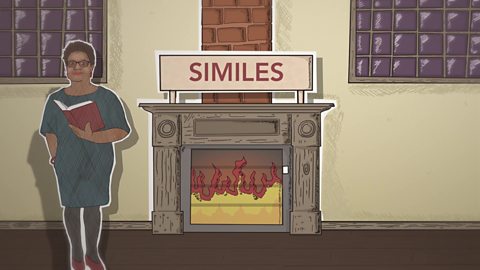
Image caption, Similes
A simile compares things using the words 'like' or 'as'. For example: 'she was as strong as an ox.' Jackie Kay uses similes in her poem βÄ€Bush FireβÄù saying a fire was "As red as a fox, your lips, a cherry".
Image caption, Metaphors
A metaphor compares two things which arenβÄôt alike but have something in common. William Wordsworth uses a metaphor in his poem "Daffodils": "Al at once I saw a crowd" makes a group of daffodils sound like a crowd of people.
Image caption, Personification
Personification describes an object as if it were alive. William Wordsworth describes daffodils as "dancing in the breeze," which makes them sound like people dancing.
1 of 3
Similes
To create vivid descriptions about what youβÄôre writing about use similes - comparing things using βÄ€likeβÄù and βÄ€asβÄù.
Jackie Kay uses similes in her poem βÄ€Bush FireβÄù
That fire, they said, was red as red
As red as a fox, your lips, a cherry;
William Wordsworth also used similes skilfully, to create imagery in the head of the reader.
I wandered lonely as a cloud
That floats on high oβÄôer vales and hillsβÄΠ
Metaphors
William Wordsworth also used metaphors comparing two things which arenβÄôt alike but have something in common.
When all at once I saw a crowd,
A host, of golden daffodils;
Personification
Wordsworth also used personification, which is describing an object as if it were alive.
Beside the lake, beneath the trees,
Fluttering and dancing in the breeze.
Different types of poetry
Once you have a subjectThe main thing or person that is being discussed or described in your writing. and some great images, you need to fit them into your poem. There are lots of different structures to use with their own rhymeWords that have or end with the same sound., rhythmA regular, repeated pattern of movement or sound. , shape poetryWhen the words of a poem are organised so they make a shape. They usually take on a shape that is being described in the poem. and length.
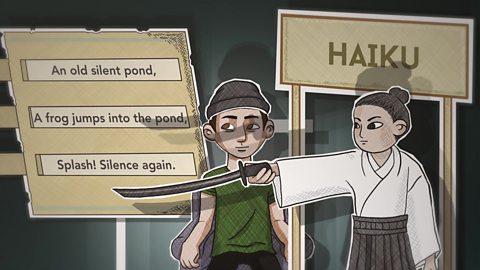
Image caption, Haiku
A haiku is a short poem that is three lines long. The first line has five syllables, the second line has seven syllables, then the last line has five syllables. A syllable is part of a word that usually contains a single vowel sound.
Image caption, Free verse
A free verse poem does not rhyme or have a regular rhythm. That means there's no regular, repeated pattern of sound.
Image caption, Limerick
A limerick is a poem that is five lines long. There are rhyming words at the end of lines one, two and five and lines three and four should also rhyme.
1 of 3
Haiku
If you would like to write a short poem, you could try a Japanese haiku. Haikus are made up of three lines and each line has a specific number of syllablePart of a word that usually contains a single vowel sound. For example, the word 'dog' has 1 syllable and the word 'elephant' has 3 syllables.. The first line has five syllables, the second line has seven syllables and then the last line has five syllables.
An old silent pond,
A frog jumps into the pond,
Splash! Silence again.
Free verse
Free verse is poetry that does not rhymeWords that have or end with the same sound. or have a regular rhythmA regular, repeated pattern of movement or sound. .
Bacon sizzling on Sunday mornings
Hot buttered toast
Crunch, crunch, crunch
Free verse lets you do anything you want with the words, the lengthHow long a poem is., the structure, and even the punctuation.
Limerick
Limericks follow a pattern. In a limerick the first, second and fifth lines have the same rhythm and rhyme. The third and fourth lines rhyme with each other too.
There was a young boy from Peru
With something important to do
So he found a quiet space
To get some headspace
And wrote poetry while on the loo
Remember
- The important thing to remember is that anyone can write a poem.
- You can write poetry about whatever you feel like, in whatever way you want, for whatever reason you choose.
Key words about setting

- Sorry, something went wrongCheck your connection, refresh the page and try again. βÄ™ Something that creates strong feelings or a clear image in your mind. For example: 'The dream was so vivid, I thought I was enjoying an ice cream in the sunshine.'
- Sorry, something went wrongCheck your connection, refresh the page and try again. βÄ™ Descriptive language like similes and metaphors. Sentences with imagery help the reader paint a picture in their mind.
- Sorry, something went wrongCheck your connection, refresh the page and try again. βÄ™ Having a lot of skill in an area. For example: 'Skilfully, the boy headed the ball from the side line into the goal.'
- Sorry, something went wrongCheck your connection, refresh the page and try again. βÄ™ A regular, repeated pattern of movement or sound. For example: 'The rhythm of his heartbeat was slow and steady, like the ticking of a clock.'
- Sorry, something went wrongCheck your connection, refresh the page and try again. βÄ™ A syllable is part of a word that usually contains a single vowel sound. For example, the word 'dog' has 1 syllable and the word 'elephant' has 3 syllables.
Test your knowledge
Try this short true or false quiz about writing a poem.
Challenge

Write a free verse poem
simile A comparison between two objects using βĉlikeβÄô or βĉasβÄô. and metaphorComparing one thing as if it was something else. For example describing a brave person as a lion. paint word pictures that make stories and poems more vivid with colourful descriptions.
Complete the sentences below to create your own free verse poem:
The mist lay over the ground like βÄΠ
My hands and feet were as cold as βÄΠ
Dark trees grew out of the mist like βÄΠ
My heart was beating as fast as βÄΠ
Not a sound could be heard in the silence.
After you have written your poem, you canβÄΠ
- draw a picture to illustrate your poem
- continue the poem starting with the word 'Suddenly'
There's more to learn about writing poetry
Writing Haikus. videoWriting Haikus
Brian Conaghan explains how haikus work and challenges you to write your own! (¬ιΕΙΙΌΆχ Ή“≥»κΩΎ Authors Live)
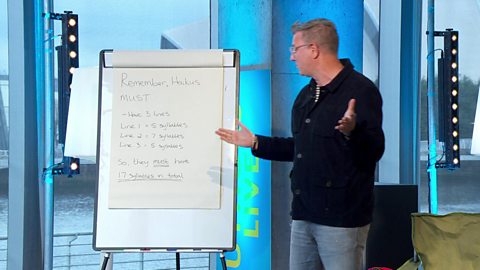
What are free verse poems? revision-guideWhat are free verse poems?
Free verse poems don't follow the rules. Find out more.
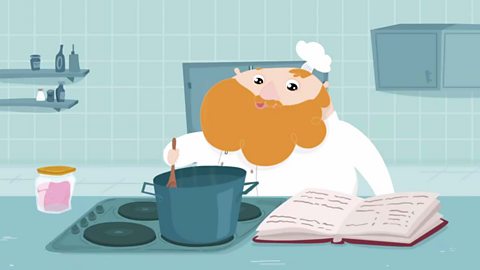
What is a limerick? revision-guideWhat is a limerick?
The first, second and fifth lines of a limerick rhyme. Find out more.

Authors Live Extra. listAuthors Live Extra
Get more from your reading and find inspiration for your own writing with exclusive interviews and tips from our Authors Live events.
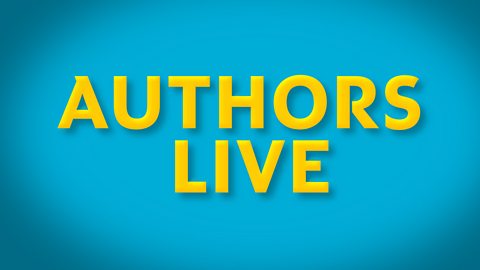
More on Creative writing
Find out more by working through a topic
- count7 of 10

- count8 of 10
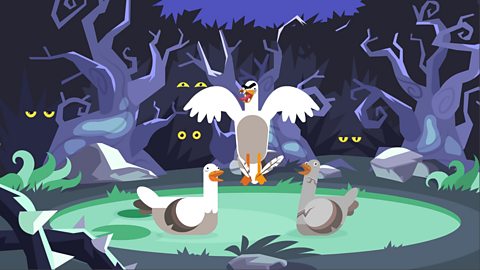
- count9 of 10

- count10 of 10
